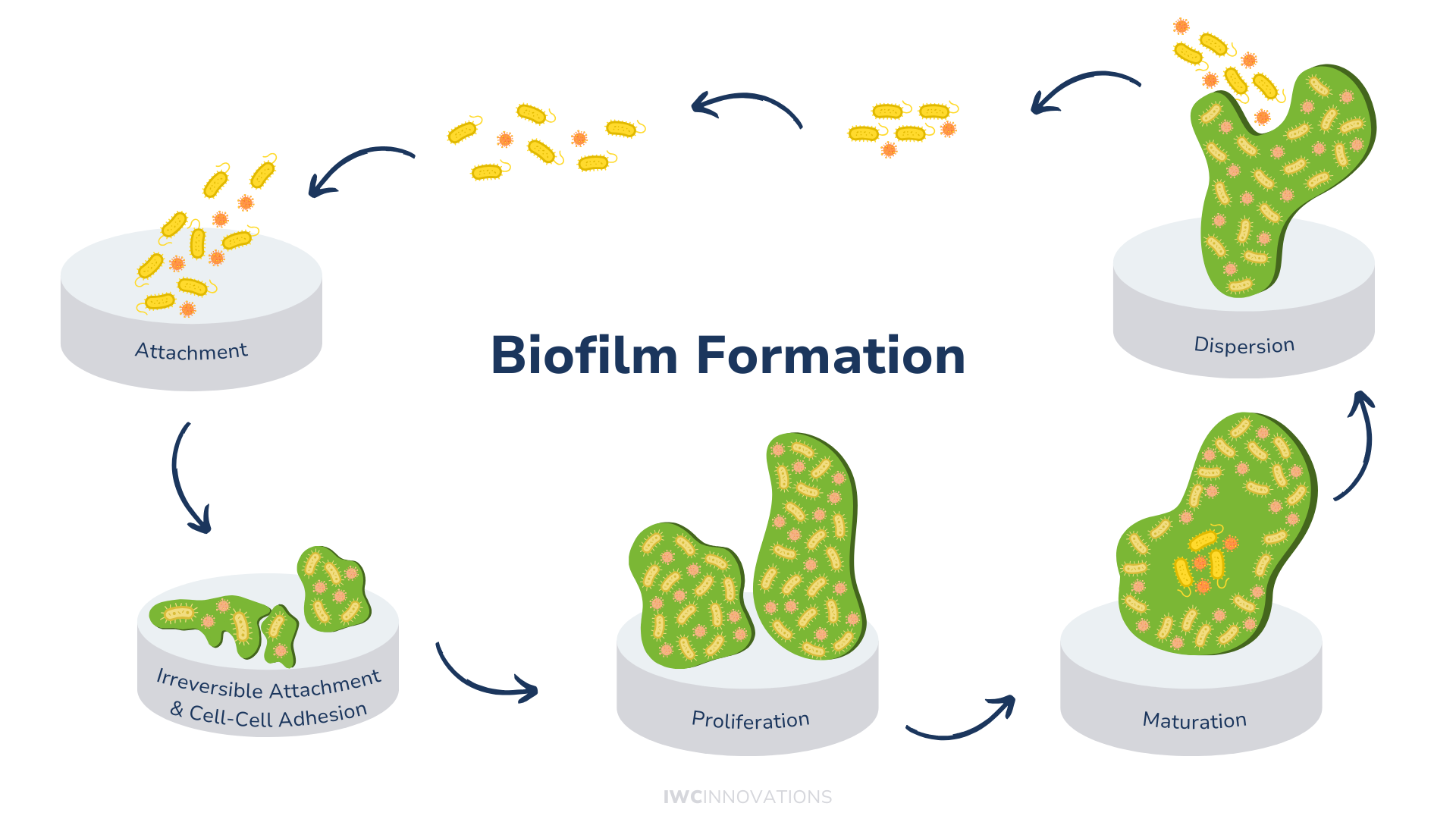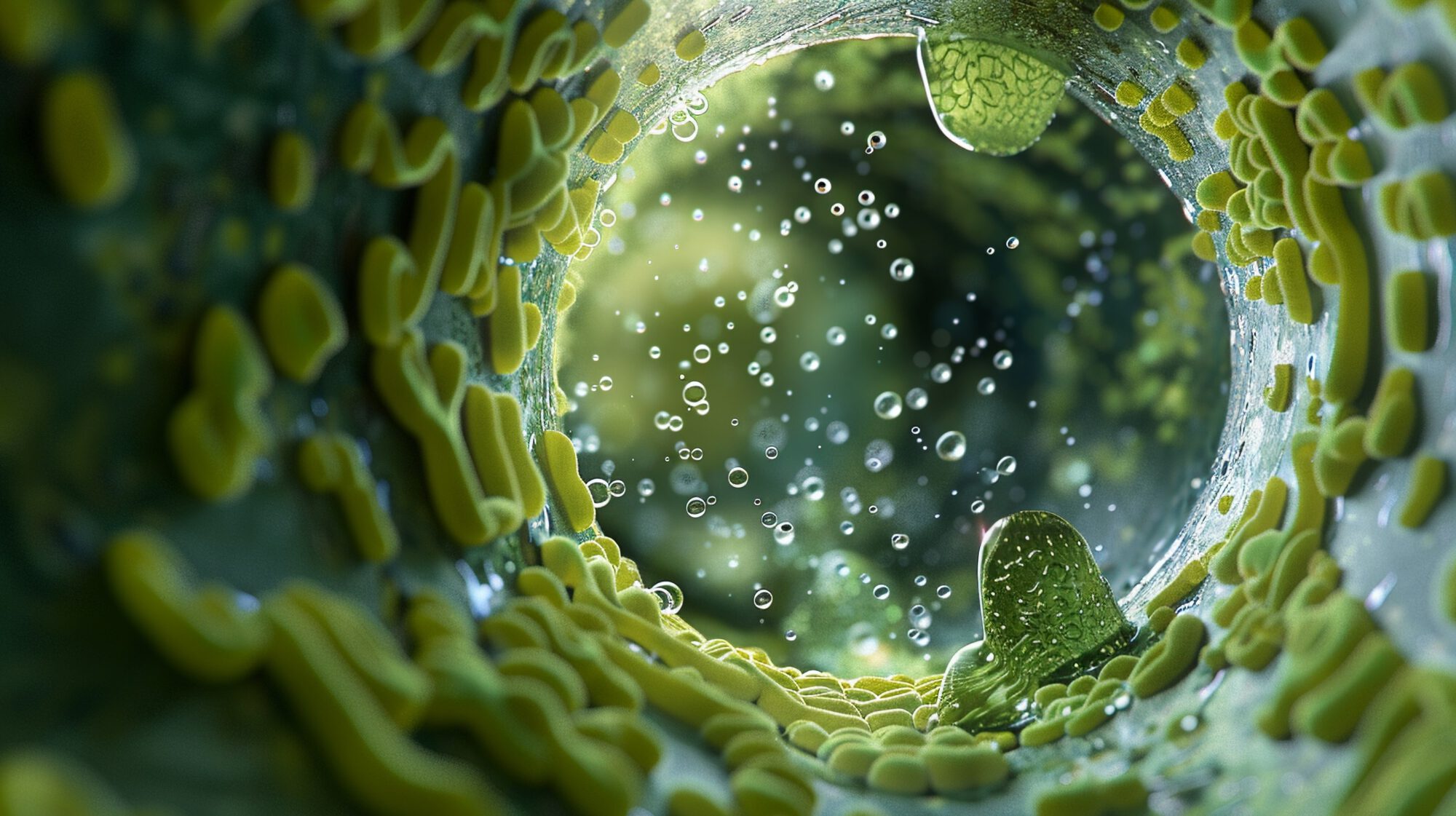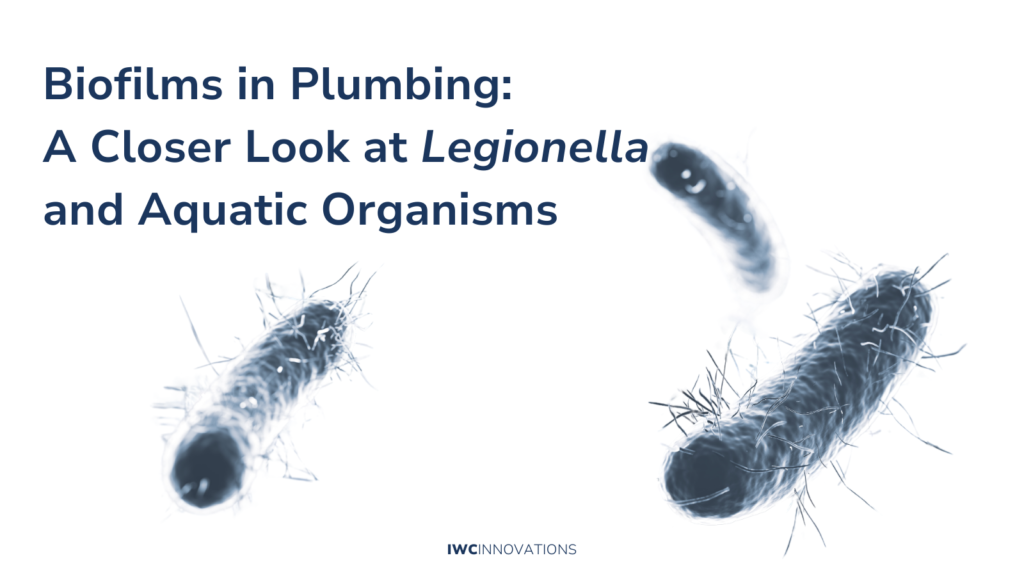In the intricate network of building plumbing systems, biofilms play a significant role in the lifecycle and spread of various microorganisms, including the infamous Legionella bacteria. These slimy layers that adhere to the surfaces of pipes and tanks are more than just residue; they are complex, living communities of microorganisms that have far-reaching effects on infrastructure, water quality and public health.
What are Biofilms?
Biofilms are collections of microorganisms that adhere to surfaces, usually in moist environments. They consist of bacteria, fungi, and protozoa, among others, embedded in a protective and adhesive matrix that the organisms themselves produce. This matrix shields the inhabitants from environmental threats, including disinfectants and changes in water temperature.
How are Biofilms Formed?

Biofilm formation occurs in a multi-step process, which can be described using the following five key steps:
1. Attachment: In this initial stage, individual free-floating (planktonic) microorganisms come into contact with a surface and attach loosely. This attachment is typically reversible, as the organisms are not yet firmly bound.
2. Irreversible Attachment & Cell-Cell Adhesion: Once the microorganisms are attached, they begin to secrete extracellular polymeric substances (EPS), which help to secure them more permanently to the surface. This stage marks the irreversible attachment of the cells, and they begin to form connections with neighboring cells through cell-cell adhesion, creating a more resilient structure.
3. Proliferation: In this phase, the microorganisms multiply and produce more EPS, which serves as a scaffold for further growth. The biofilm begins to thicken, and the cells communicate with each other through quorum-sensing, a form of chemical signaling that regulates gene expression and promotes colony growth.
4. Maturation: As the biofilm grows, it reaches a point of structural complexity. It develops distinct layers or microenvironments, where different cells might perform specialized functions. Oxygen gradients can become delineated and therefore metabolic activities can range from actively dividing cells to dormant or “sleeper” cells. Channels also form within the biofilm, allowing nutrients to circulate and waste products to be expelled, which further supports the survival and functioning of the community.
5. Dispersion: Finally, the biofilm begins to release cells or clumps of cells into the surrounding environment. These dispersed cells can migrate to new surfaces and repeat the biofilm formation process, ensuring the spread and survival of the microbial community.
This cycle allows biofilms to establish, grow, and colonize new environments efficiently.
Biofilms as Legionella Safe Havens
 Legionella bacteria, the causative agent of Legionnaires’ disease, find a particularly hospitable environment within biofilms. These bacteria thrive in warm water and can colonize biofilms in hot water tanks, cooling towers, and other parts of building water systems. The biofilm offers Legionella protection from thermal and chemical disinfection (e.g. chlorine), making them difficult to eradicate once they’ve established a foothold.
Legionella bacteria, the causative agent of Legionnaires’ disease, find a particularly hospitable environment within biofilms. These bacteria thrive in warm water and can colonize biofilms in hot water tanks, cooling towers, and other parts of building water systems. The biofilm offers Legionella protection from thermal and chemical disinfection (e.g. chlorine), making them difficult to eradicate once they’ve established a foothold.
Biofilms serve as a sort of “primary school” for Legionella, providing a safe space where they can grow, reproduce, and importantly, interact with various protozoa (e.g. amoebae)—another tenant of biofilms. Legionella bacteria use amoebae as hosts, replicating within them and then re-entering the water system in greater numbers. This interaction not only enhances their survivability but also increases their virulence, making the bacteria more capable of causing disease when humans inhale contaminated water droplets.
Implications for Water System Management
The resilience and ubiquity of biofilms pose signific ant challenges for building maintenance and public health officials. Traditional water system management strategies, such as flushing systems with hot water or chlorine, can be less effective if biofilms are present. Organisms in biofilm communities are remarkably resistant to both physical and chemical methods of control.
ant challenges for building maintenance and public health officials. Traditional water system management strategies, such as flushing systems with hot water or chlorine, can be less effective if biofilms are present. Organisms in biofilm communities are remarkably resistant to both physical and chemical methods of control.
To manage the risks associated with biofilms, it is critical that facility managers implement comprehensive water management plans. These should include regular monitoring for signs of biofilm formation, avoiding water stagnation in vacant or low utilization areas, routine cleaning and disinfection of water systems, and possibly the use of biocides that can penetrate biofilms and eradicate the organisms within.
Looking Ahead
Emerging technologies and research are focusing on innovative ways to prevent biofilm formation and mitigate their impact. For instance, ultraviolet light, ultrasound, and advanced chemical treatments are being explored by industry researchers as potential tools to disrupt biofilms and expose the organisms within them to more traditional methods of water treatment.
As we continue to understand the complex interactions within biofilms and their role in the life cycle of Legionella and other aquatic organisms, it is clear that tackling these structures is key to improving water quality and preventing waterborne diseases in building environments. Ensuring safe water systems is not just a matter of treating water but understanding and managing the microbial ecosystems within it.
Protecting Your Water Systems
At IWC Innovations, we understand the critical importance of addressing biofilm growth, particularly in building plumbing systems where it can harbor harmful microorganisms like Legionella and other waterborne pathogens. Our team specializes in water treatment solutions tailored to combat biofilms effectively, using cutting-edge technologies and comprehensive water management strategies. By offering regular monitoring, specialized biocides, and customized maintenance plans, IWC Innovations ensures your water system risk associated with biofilm-related contamination is mitigated appropriately. Trust us to help protect your facility, employees, and guests from the threats posed by biofilms and waterborne diseases.




